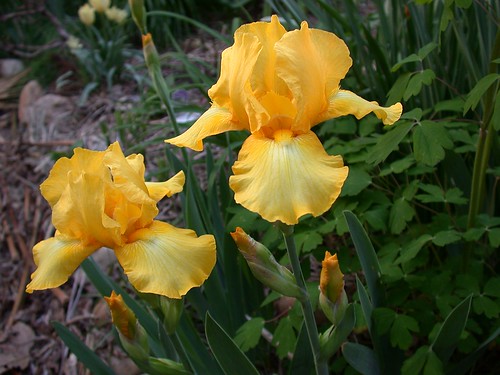
Iris 'Buckwheat'
What a relief that spring is finally here! In fact the last 3 days have felt more like summer, humid and with highs close to 80. In addition to the spring perennials cheering me up, I'm seeing recovery on several plants that were badly damaged by the winter and that I thought (or feared) were dead. To recap, this was the Washington, DC area's coldest winter in 20 years, and was a good test of all the marginally hardy plants we're growing here! The low in my own yard was about 5 degrees in early January, with several more lows in the 9-12 degree range and several periods of temperatures well below freezing.
Figs all around the DC area took a hard hit from this winter, and most were killed to the ground. But figs are resilient, and as long as the roots are still alive, they will usually send up new growth. Although the trunks on my own figs still seem to be alive, the branches are dead and new growth is appearing only at the very base. Depending on how much growth they put out, some figs may produce a late crop this year, but most of us probably won't get any figs until next year when our plants have recovered a bit.
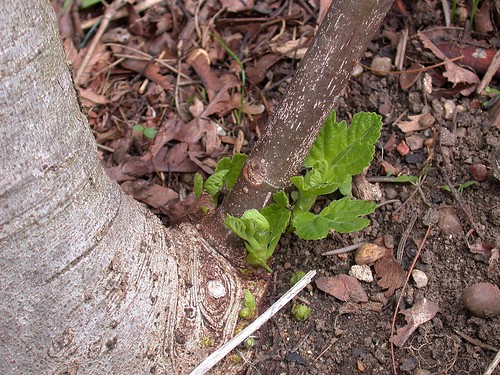
'Brown Turkey' fig, new growth from base
Fatsia japonica, generally considered marginal in zone 7, has pulled through with minimal damage. The foliage is pretty beaten up, but strong new growth is emerging. Fatsias send up a flush of new foliage in the spring, so even if badly damaged, they will usually look good by early summer (see Fabulous Fatsia).

New growth on Fatsia japonica
I'm pleased to see new growth on fatsia relative Schefflera delavayi, a new species for me that I planted in late summer last year. I covered the plant for several nights during our coldest period in early January, but otherwise all it had all winter was a mulch of leaves around the base. Last year's leaves suffered a bit but otherwise look pretty good. I'm looking forward to seeing this tropical-looking plant gain a little size in my garden.

Schefflera delavayi
A very big surprise is new growth on Tetrapanax papyrifer 'Steroidal Giant'. This large-growing selection seems to be hardier than the older and more common form of this species in cultivation, but I certainly didn't expect a potted plant, left outdoors exposed to the coldest temperatures all winter, to survive. I fully expected the roots to freeze and the plant to die, so it was a shock to spot new growth this morning as I was about to pull the plant out of its pot to discard!
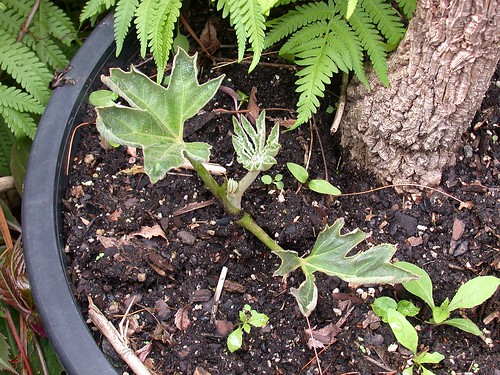
Tetrapanax papyrifer 'Steroidal Giant'
Similarly, a potted Firmiana simplex on my roof deck is also putting out new growth. While this species seems to be perfectly hardy here, plants grown in pots tend to lose a zone or two of their hardiness (and I lost several other small trees that were in pots).

Swelling bud on Firmiana simplex
Hemiboea subcapitata, a hardy gesneriad from China, came back strongly; in fact it was one of the first perennials to show new growth this spring. As a gesneriad specialist I wish I could give this species a stronger endorsement, but frankly, it's interesting primarily as an oddity. The foliage is very attractive to slugs and the flowers, while pretty enough, are fairly small and the blooming period is short.
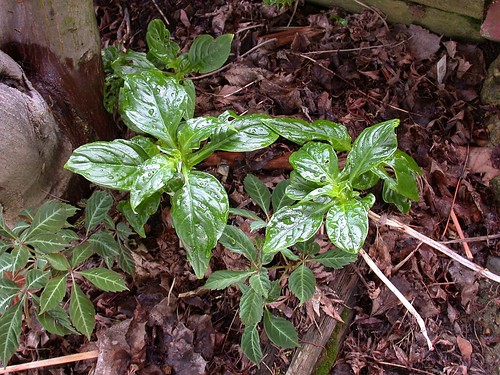
Hemiboea subcapitata
Several begonias have put out strong new growth since I wrote about them a couple of weeks ago (see Hardy begonias emerging). I just today noticed that Begonia 'Little Brother Montgomery' has also survived in my garden and is putting out new growth. I'm truly impressed by the hardiness of this plant, which was protected with nothing more than a light mulch. I'm still waiting to see what other begonias may have survived.
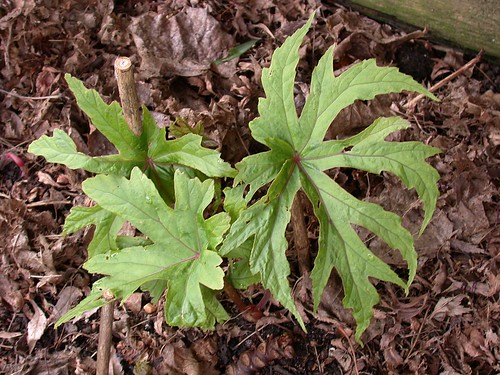
Begonia pedatifida
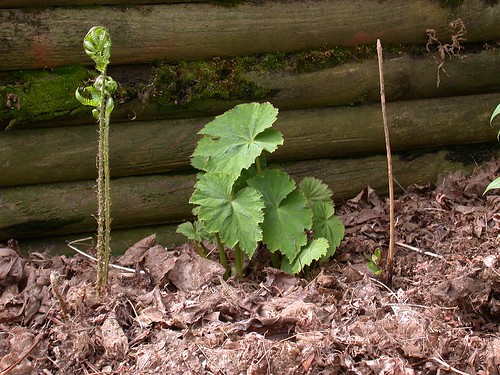
Begonia emeiensis
One major no-show so far is my hardy banana, Musa basjoo (see Everybody loves my big banana). This is generally a late riser anyway, but this species is quite hardy and I'm surprised to see nothing whatsoever. Is it possible that my Big Pile O'Crap™ protection method has finally failed me? I suspect that parts of the corm/rhizome are still alive, deep down, and it's just a matter of time before I see new growth.
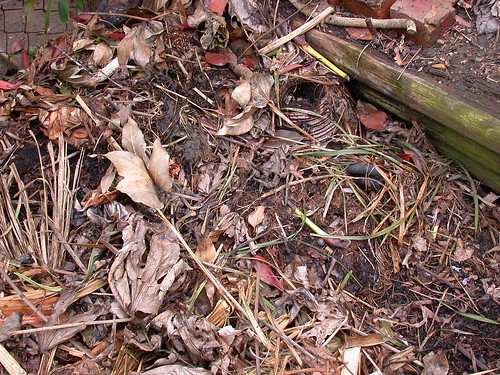
Musa basjoo?
My "Bulgarian" windmill palm, which I feared was dead, starting putting out new growth several weeks ago (see Bulgarian wins!). And now it's blooming! Several inflorescences have emerged from the trunk but I will probably cut them off to help divert its energy to producing new foliage.
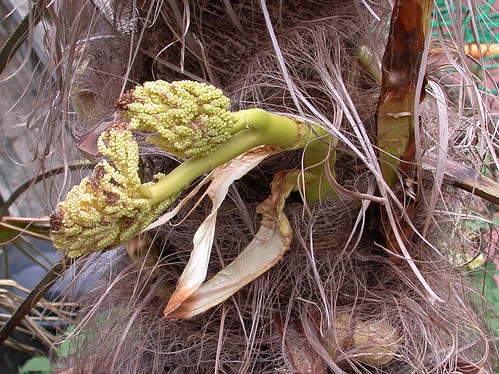
Windmill palm (Trachycarpus fortunei "Bulgarian") inflorescence
Outside my own garden, some windmill palms around town that I feared were dead are showing new growth, including at least one of the palms in front of the Scottish Rite Temple in my neighborhood (see The saga of the Scottish Rite palms), the windmill palm at the Smithsonian's Air and Space Museum, and the windmill palms flanking the entrance of the Smithsonian's National Museum of Natural History on the National Mall downtown.
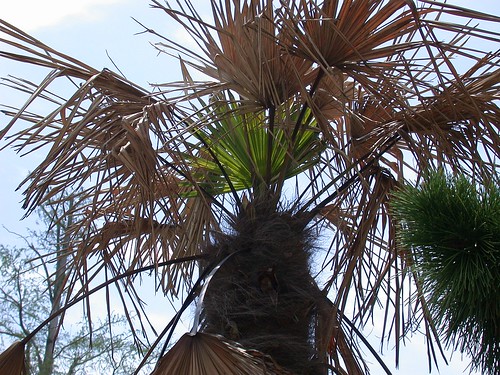
Museum of Natural History palm, showing new growth
Probably lost are the several wollemi pines (Wollemia nobilis) that were planted in Smithsonian gardens downtown; when I saw them this spring they were completely brown and apparently dead. The photo below shows a possibly still-living shoot at the base of a large specimen that was cut down (stump not visible in this photo). Here's a photo of the same plant taken two years ago; this and a companion in the Smithsonian's Haupt Garden had survived for several years and were doing reasonably well, having reached 8 or 10 feet in height.
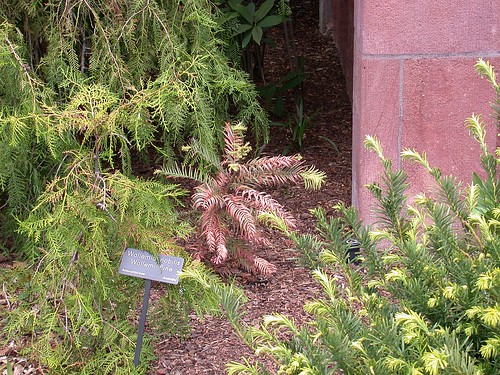
Wollemi pine, surviving?
All in all, this was a very educational winter. I think it was an eye-opener for many people who expected plants to be hardier than they really are. But others passed the test, and that's the reward after a winter like this one. It's sad to see plants like the wollemi pines (probably) dead, as this intriguing species was discovered only a few years ago. But we'll never know the cultural requirements or hardiness limits of any plant unless we take a few risks to test them, will we?
Click here for more May photos in my DC Tropics Flickr album.

Your successes really are something to celebrate! That Tetrapanax, the Schefflera, the blooming palm...I am so happy there are signs of life.
ReplyDeleteAnd I've had a few more surprises just since writing this! I plan to have another blog post soon, updating all of my successes as well as some failures.
DeleteSome nice new growth you have there, and encouraging surprises too like the Firmiana simplex.
ReplyDeleteThanks, another blog post with even more surprises is in the works!
DeleteSo glad to hear of all the successes, John. My Fatsia only has basal growth and perennials, shrubs and trees are later flowering this Spring. I'll try not to complain too loudly though.
ReplyDeleteInterestingly, since posting this several fatsia stems have died even though they were already sending out new growth at the tips--all the new growth wilted rather abruptly. But all are re-sprouting from the base so I'm not terribly worried.
DeleteI'm heartened by the survivors you show us. BTW, I have come to the conclusion that 'Steroidal Giant' cannot be killed except maybe with a blowtorch. I love the plant/tree, but ii is really a nuisance spreading everywhere Very smart to have yours in a pot, John..
ReplyDeleteThat 'Steroidal Giant' is something to be reckoned with! Just since writing this, I've discovered that it escaped from the holes in the bottom of the pot and is popping up in at least 2 places in the ground outside! So much for keeping it contained!
DeleteI hope the wollemias stump sprout. Mine is doing well, having been heavily protected at 10 or below.
ReplyDeleteThey aren't looking good. I looked at one of the smaller ones a few days ago, and there is no sign of life. The larger ones in the Haupt Garden may have a chance--the cut stumps oozed quite a bit of resin, which may (or may not) mean the roots are still alive.
Delete